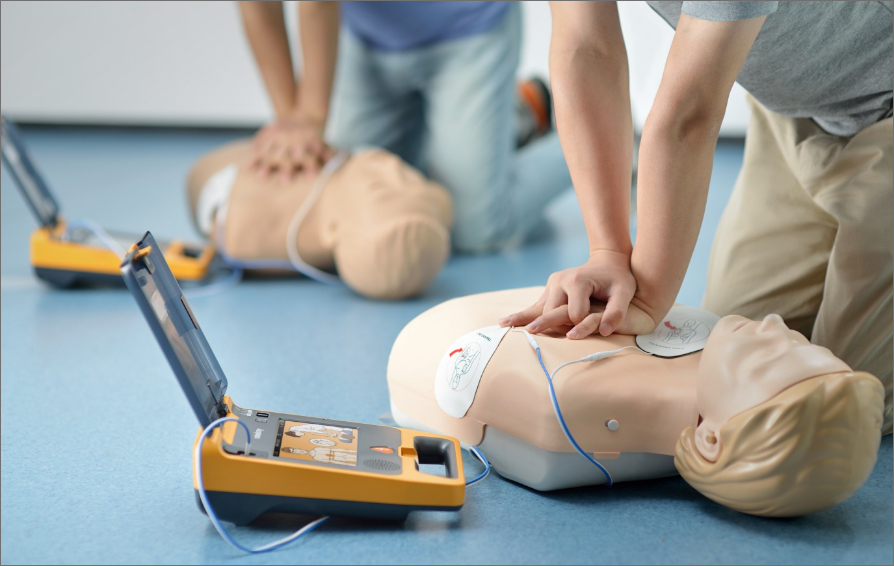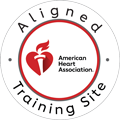Sudden cardiac arrest (SCA) strikes without warning, claiming the lives of hundreds of thousands of people each year. Unlike a heart attack, SCA is an electrical malfunction in the heart that causes it to stop beating effectively. Without immediate treatment, survival is unlikely. However, thanks to advancements in emergency care technology, a device known as the Automated External Defibrillator, or AED, can significantly improve the odds. These user-friendly machines are vital tools in emergencies and are increasingly found in public spaces. Understanding how AEDs work, when to use them, and how to get trained can help save lives.

What Does AED Mean?
An AED, or Automated External Defibrillator, is a portable device designed to detect and correct life-threatening heart rhythms. Breaking down the name reveals its functionality. “Automated” means the device performs diagnostic tasks and delivers instructions automatically, making it usable by individuals without medical training. “External” indicates that the device is applied to the surface of the skin, rather than requiring internal access. Finally, “Defibrillator” refers to its primary function: delivering a therapeutic electric shock to the heart to restore a normal rhythm. This straightforward design, combined with built-in prompts, makes AEDs powerful allies in critical moments.
What Is an AED Machine Used For?
The main purpose of an AED machine is to treat sudden cardiac arrest by restoring a regular heart rhythm. When someone collapses and becomes unresponsive, the AED assesses the person’s heart rhythm using electrode pads placed on the chest. If the device detects a life-threatening arrhythmia—like ventricular fibrillation or pulseless ventricular tachycardia—it prompts the user to deliver a shock. This electrical pulse can help the heart “reset” and resume normal pumping. Modern AEDs are equipped with clear voice instructions and visual aids, guiding users through each step and reducing the risk of misuse. Some even offer real-time CPR feedback to improve the effectiveness of chest compressions.
Is AED Used for CPR?
Although AEDs play a crucial role during cardiac emergencies, they do not replace CPR. Instead, they complement it. While CPR keeps oxygenated blood flowing to vital organs, an AED addresses the root electrical problem in the heart. Together, they form a critical link in the “Chain of Survival,” a series of actions proven to improve outcomes after cardiac arrest. According to the American Heart Association, combining high-quality CPR with early defibrillation within the first few minutes of collapse can double or even triple survival rates. Therefore, knowing how to perform both CPR and use an AED is essential for anyone who may encounter such emergencies.
When Should an AED Be Used?
Recognizing when to use an AED is just as important as knowing how. An AED should be used on someone unresponsive, not breathing normally, and has no detectable pulse. These signs suggest the person may be experiencing sudden cardiac arrest. It is vital to act quickly; using an AED within three to five minutes of collapse greatly increases the chance of survival. However, there are a few contraindications. If the victim is in water, they should be moved to a dry area before applying the AED. Similarly, if a medication patch or pacemaker is present, pads should be placed at least one inch away. Still, the general rule is to use the AED as soon as possible—delays can be fatal.
AED Training and Certification
To use an AED effectively and confidently, proper training is key. Several organizations offer comprehensive AED and CPR certification, including CPR Indianapolis, a trusted American Heart Association training site. Their courses teach participants how to recognize cardiac arrest, perform CPR, and operate an AED correctly. Programs include Basic Life Support (BLS) for Healthcare Providers, Advanced Cardiovascular Life Support (ACLS), Pediatric Advanced Life Support (PALS), standard CPR, and First Aid. These certifications are suitable for both professionals and laypeople, and the hands-on training ensures that students feel prepared to act when it matters most.
Call Us Now
Get the Best CPR Class in Indianapolis Today!
AEDs in Public Spaces
AEDs are becoming more common in public spaces for a reason—they save lives. Airports, gyms, schools, malls, office buildings, and even sports arenas now routinely install AED stations. Being able to quickly locate and access one can make the difference between life and death. Look for bright signage, often featuring a heart symbol with a lightning bolt. Many AED stations also include simple instructions on use and contact numbers for emergency services. Additionally, most states offer legal protection through Good Samaritan laws, shielding individuals who assist in emergencies from liability, provided they act in good faith.
Conclusion
In summary, the Automated External Defibrillator is a life-saving device designed to be used by everyday people in extraordinary moments. When used alongside CPR, it significantly improves the chances of surviving sudden cardiac arrest. Public awareness, access, and training are key to ensuring these devices fulfill their life-saving potential. If you’re reading this and haven’t yet received CPR and AED certification, there’s no better time to start than now. Not only could it make you more prepared, but it could also make you a hero.
About CPR Indianapolis
CPR Indianapolis is proud to be an official American Heart Association training site. With a focus on stress-free, hands-on instruction, CPR Indianapolis offers courses that meet national standards while ensuring students leave with real confidence. Whether you’re a healthcare provider, teacher, coach, or concerned parent, there’s a course suited to your needs. Classes are held regularly and can be booked online. Visit CPR Indianapolis today to learn more, schedule a session, and take the first step toward becoming someone who knows exactly what to do when seconds count.


